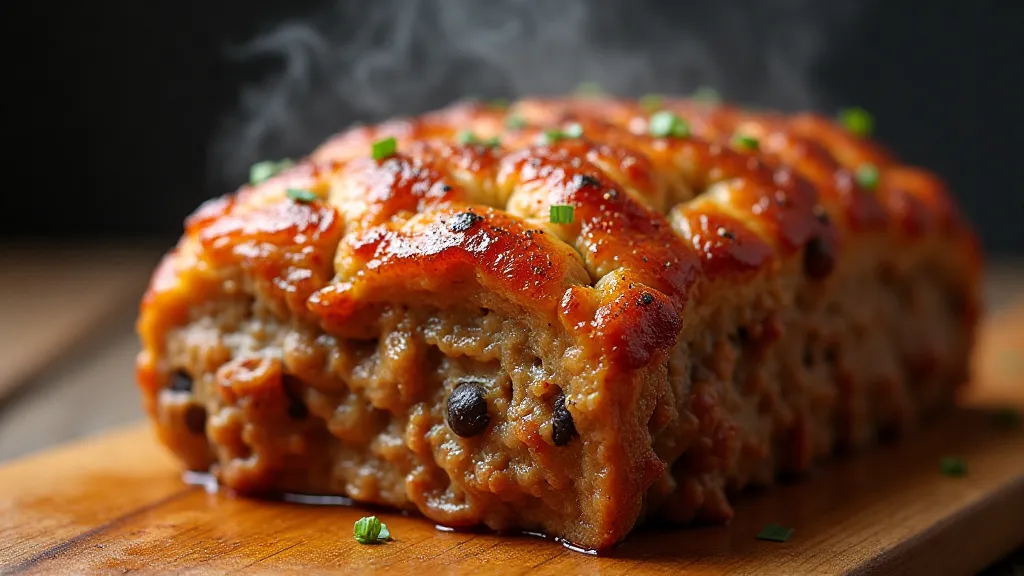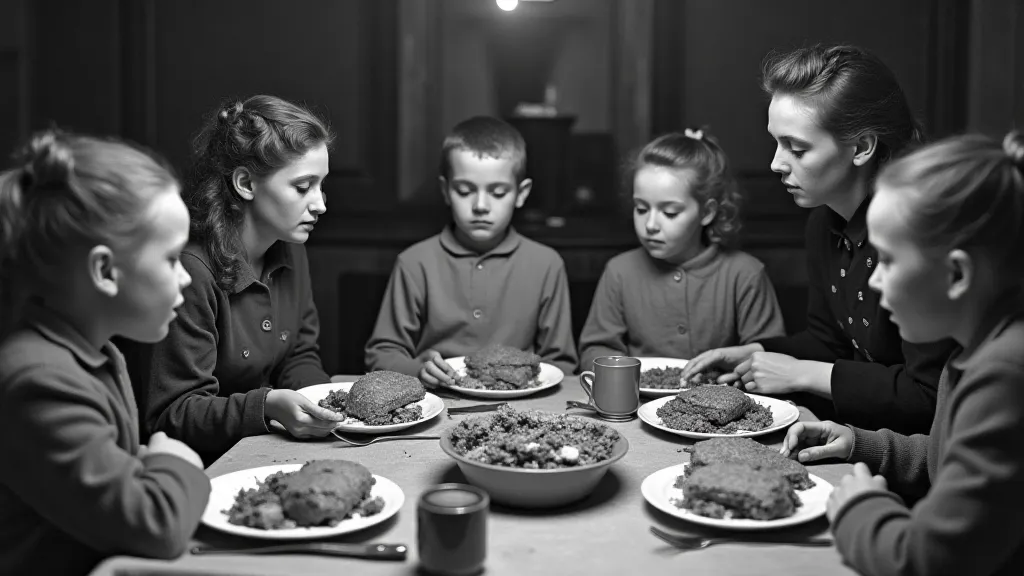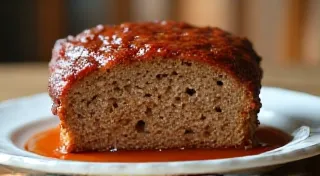Meatloaf: Stretching Meats with Clever Fillers
During the Great Depression, every scrap of food was precious. Families faced immense hardship, and meat, once a regular part of the diet, became a luxury. Resourceful cooks developed ingenious ways to make small amounts of meat go further, and meatloaf became a cornerstone of Depression-era meals. It wasn't just about making a meal; it was about maximizing every ounce of protein available and creating something satisfying for the family. The ingenuity of cooks during that era wasn't limited to meatloaf, of course. Many other dishes emerged, demonstrating incredible resourcefulness in the face of scarcity. For example, transforming stale bread into something delicious was a common practice, and that's precisely what cooks achieved with dishes like bread pudding.
The Challenge: Limited Meat Supplies
The Depression meant widespread unemployment and a severe drop in income. Buying a large cut of meat was often simply impossible. Ground beef, when available, was typically the most affordable option, but even that was a significant expense. This led to the creative use of “fillers” - ingredients that added bulk and flavor to the meatloaf without significantly increasing the cost. These weren't seen as compromises; they were vital strategies for survival. And it wasn’t just ground beef that was stretched; other animal products, like pork scraps, were ingeniously incorporated into recipes to ensure families had something nourishing to eat.
Common Fillers and Why They Worked
Several ingredients became staples in Depression-era meatloaf recipes. Here's a look at some of the most popular:
- Oatmeal: A remarkably common filler, oatmeal added value>t value addedtt>t value>t>t value>t>t>t>t>t>t>t>t>t>t>t>t>t>t>t>t>t>t>t>t>t>t>t>t>t>t>t>t>t>t>t>t>t>t>t>t>t>t>t>t>t>t>t>t>t>t>t>t>t>t>t>t>t>t>t>t>t>t value
- Bread Crumbs: Often made from stale bread that would otherwise be thrown away, bread crumbs served a similar purpose to oatmeal, binding the meatloaf and adding substance. Think of the resourcefulness involved – nothing was wasted! Even leftover cooked rice became a valuable ingredient. This approach to minimizing waste extended far beyond just meatloaf; families were incredibly adept at utilizing every part of their food, as evidenced by dishes like scrapple, a clever way to utilize pork scraps.
- Cooked Rice: Like oatmeal and bread crumbs, cooked rice absorbed moisture and added volume.
- Mashed Potatoes: A clever way to use up leftover mashed potatoes, this ingredient added flavor and a creamy texture.
- Vegetables: Grated carrots, celery, or onions were frequently incorporated, adding nutrients and flavor while stretching the meat further.
Original Depression-Era Meatloaf Recipes
Here are a couple of examples of meatloaf recipes as they would have been documented during the Depression. Keep in mind that measurements were often approximate – cooks relied on their intuition and what they had on hand.
Recipe 1: Simple Oatmeal Meatloaf
- 1 pound ground beef
- 1/2 cup cooked oatmeal
- 1/4 cup grated onion
- 1 egg (or substitute with a tablespoon of baking soda mixed with a little water)
- Salt and pepper to taste
Recipe 2: Potato and Breadcrumb Meatloaf
- 1 pound ground beef
- 1/2 cup mashed potatoes
- 1/4 cup bread crumbs
- 1/4 cup grated carrot
- 1 teaspoon Worcestershire sauce (if available)
- Salt and pepper to taste

Tips for Authentic Depression-Era Meatloaf
- Don't be afraid to experiment: Depression cooking was all about making do with what you had. If you’re missing an ingredient, substitute with something similar. This philosophy of improvisation went beyond just individual ingredients; it applied to entire meal planning. Sometimes, if meat was scarce, families relied on other sources of protein or focused on starch-based dishes.
- Use simple seasonings: Salt and pepper were the primary seasonings. More complex flavorings were rare. Though these might seem basic to some, these staples were precious.
- Embrace the rustic texture: These weren't perfectly formed, Instagram-worthy creations. They were hearty, filling meals born out of necessity. The focus was entirely on sustenance.
- Moisture is Key: The fillers were there to keep the meatloaf moist. Be sure to use enough!
- Consider the Bigger Picture: Making meatloaf wasn't just about one recipe, it was a symbol of a larger strategy. Like other meals born out of necessity, dishes like Hoover Stew were common during this time, offering a hearty and filling alternative when meat was simply unattainable.
Meatloaf during the Great Depression was more than just a meal; it was a testament to the ingenuity and resilience of families facing unimaginable hardship. By stretching limited resources and finding creative solutions, they ensured that their loved ones had something to eat. Making a Depression-era meatloaf today offers a fascinating glimpse into the past and a chance to appreciate the resourcefulness of those who came before us. Even seemingly small luxuries, like a decadent dessert, were treasured and innovated. For example, using stale bread to create something delightful, similar to how families crafted bread pudding, demonstrates that even during times of scarcity, there was a desire for comfort and joy.

Beyond Meatloaf: The Broader Context of Depression-Era Cooking
The resourcefulness exemplified by Depression-era meatloaf recipes extended far beyond the kitchen. It reflected a nationwide effort to minimize waste and maximize every available resource. Families meticulously planned their meals, utilizing leftovers in creative ways and substituting ingredients whenever possible. Even appetizers played a vital role in stretching meals, and dishes like deviled eggs became popular due to their affordability and ability to be made with simple ingredients.
The Lasting Legacy of Depression-Era Cooking
While the Great Depression is a chapter in history, the lessons learned about resourcefulness and ingenuity continue to resonate today. Many Depression-era recipes, including meatloaf, have experienced a resurgence in popularity, not just for their historical significance but also for their deliciousness and affordability. Moreover, the emphasis on minimizing food waste and utilizing simple, readily available ingredients aligns perfectly with contemporary efforts to promote sustainable eating practices.





